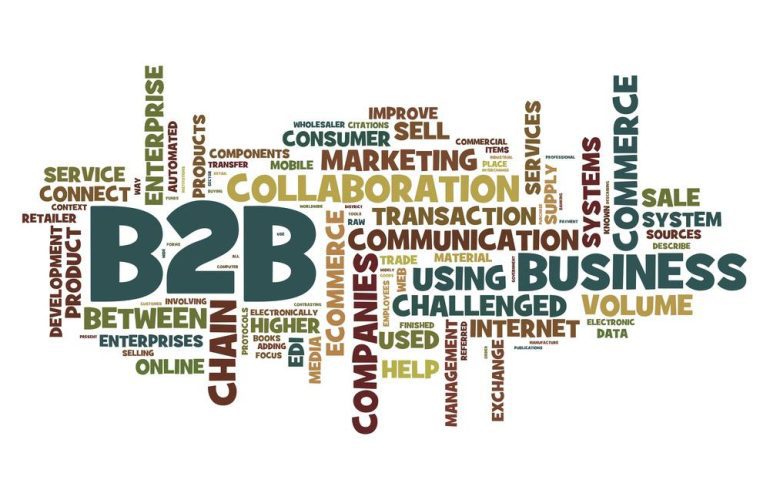In today’s competitive business landscape, effective lead generation is more crucial than ever, especially for B2B companies striving to connect with potential clients and expand their market share. However, many businesses face significant challenges in navigating the complexities of lead generation, from identifying the right audience to utilizing the most effective channels. In this article, we will explore some of the common hurdles companies encounter in their lead generation efforts and provide key strategies to overcome them. Whether you’re a seasoned marketer or just starting out, these insights will equip you with the tools necessary to enhance your lead generation tactics and drive meaningful results for your business.
Table of Contents
- Understanding the Common Challenges in B2B Lead Generation
- Leveraging Technology to Streamline Your Lead Generation Process
- Building Relationships for Sustainable Lead Generation Success
- Measuring and Analyzing Your Lead Generation Efforts Effectively
- The Way Forward
Understanding the Common Challenges in B2B Lead Generation
In the realm of B2B lead generation, several challenges can impede progress and reduce effectiveness. One of the most significant hurdles is the long sales cycle, typical of B2B transactions. Potential clients often require multiple touchpoints and extensive information before making purchasing decisions. This extended process necessitates a well-planned strategy that nurtures leads through various stages of awareness, consideration, and decision-making. Additionally, identifying the right target audience can be a daunting task, as businesses must refine their marketing efforts to resonate with specific industries, company sizes, and decision-makers.
Another challenge lies in the increasing competition within the B2B landscape. As companies strive to differentiate themselves, the noise can complicate lead generation efforts. To combat this, organizations must adopt a multifaceted approach, utilizing content marketing, SEO, and social media engagement to build brand awareness and attract leads. Furthermore, maintaining data quality is critical; businesses must consistently cleanse and update their databases to ensure they are targeting valid contacts. Failing to do so can lead to wasted resources and missed opportunities. The following table summarizes these challenges and their implications:
| Challenge | Implication |
|---|---|
| Long Sales Cycle | Slower lead conversion |
| Target Audience Identification | Ineffective marketing efforts |
| Increasing Competition | Difficulty in standing out |
| Data Quality Maintenance | Wasted resources |
Leveraging Technology to Streamline Your Lead Generation Process
In the evolving landscape of B2B lead generation, leveraging technology can significantly enhance your efficiency and effectiveness. Automated tools, such as Customer Relationship Management (CRM) systems and marketing automation platforms, can help you manage your leads with remarkable precision. By implementing these technologies, businesses can enjoy streamlined processes that reduce manual input and minimize errors. For instance, email marketing software allows for targeted campaigns that can nurture leads based on their behavior and preferences, enhancing the chances of conversion.
To maximize the potential of your lead generation efforts, consider integrating data analytics tools to track performance metrics. This real-time data allows you to identify which strategies are working and where improvements are needed. Additionally, utilizing chatbots on your website can enhance customer engagement by providing instant responses to inquiries, thus capturing leads even outside of business hours. The following table outlines essential technologies and their benefits:
| Technology | Benefits |
|---|---|
| CRM Systems | Centralize lead information and automate follow-ups. |
| Marketing Automation | Run targeted campaigns and nurture leads effectively. |
| Data Analytics Tools | Track metrics and optimize strategies in real-time. |
| Chatbots | Engage customers instantly and capture leads 24/7. |
Building Relationships for Sustainable Lead Generation Success
In today’s competitive B2B landscape, fostering genuine relationships is paramount to achieving long-term lead generation success. Building strong connections with both potential and existing clients creates a foundation of trust that encourages engagement and prioritizes your brand. Focus on establishing communication pathways through various channels, ensuring that your target audience feels valued and understood. Consider the following strategies to enhance your relational approach:
- Personalized Communication: Tailor your messaging based on the specific needs and interests of your leads.
- Engagement through Content: Offer valuable content that educates and informs, positioning your brand as a trusted resource.
- Networking Opportunities: Attend industry events to connect with prospects and foster relationships face-to-face.
- Consistent Follow-ups: Establish a routine for outreach, ensuring you stay top-of-mind without overwhelming your leads.
By adopting a relationship-driven approach to lead generation, businesses can cultivate an ecosystem of referrals and repeat engagements. Assess your current strategies against this relational framework and identify areas for improvement. Establish a feedback loop with your audience, gathering insights that can guide your outreach efforts and refine your offerings. The table below summarizes key relationship-building tools you can leverage:
| Tool | Purpose | Impact on Relationships |
|---|---|---|
| Email Marketing | Direct engagement with personalized content | Strengthens trust and loyalty |
| Social Media | Real-time interaction and feedback | Boosts brand visibility and rapport |
| Webinars | Opportunity to educate and engage | Establishes authority and connection |
| CRM Systems | Organizes and tracks interactions | Enhances relationship management |
Measuring and Analyzing Your Lead Generation Efforts Effectively
To truly understand the effectiveness of your lead generation strategies, it’s essential to measure and analyze your efforts regularly. Start by establishing key performance indicators (KPIs) that align with your business goals. These may include metrics such as lead conversion rates, cost per lead, and the overall ROI of your campaigns. Utilizing tools like Google Analytics, CRM systems, and marketing automation software can enable you to gather the necessary data. Consider focusing on the following indicators to gauge your success:
- Lead Volume: Track the number of leads generated over specific periods.
- Lead Quality: Evaluate how many leads convert into customers.
- Lead Source Effectiveness: Determine which channels are bringing in the most valuable leads.
Once you’ve collected this data, it’s important to analyze it to identify trends and make informed decisions. You can create simple tables to track performance over time and visualize your findings. For example, a comparison table can help you assess lead generation strategies against each other:
| Lead Generation Strategy | Leads Generated | Conversion Rate (%) |
|---|---|---|
| Content Marketing | 250 | 15 |
| PPC Advertising | 300 | 10 |
| Email Campaigns | 150 | 20 |
By regularly reviewing these metrics, you can pinpoint which strategies deliver the best results and refine your approach accordingly. This not only enhances the efficiency of your lead generation efforts but can also help you allocate resources more strategically, ensuring that you’re focusing on the channels that drive the most value for your business.
The Way Forward
navigating the complexities of B2B lead generation is no small feat, but with the right strategies in place, it can become a more manageable and rewarding endeavor. By understanding your target audience, leveraging the power of technology, and continually refining your approach, you can significantly enhance your lead generation efforts. Remember, success in B2B marketing is a marathon, not a sprint. It requires patience, persistence, and a willingness to adapt. As you implement these key strategies, stay open to new ideas and be ready to pivot as needed. The landscape of B2B marketing is always evolving, and those who embrace change will find the greatest opportunities for growth. We hope this article has provided you with valuable insights and practical tips to help you overcome your lead generation challenges. Here’s to a more fruitful and efficient lead generation process that propels your business forward!






